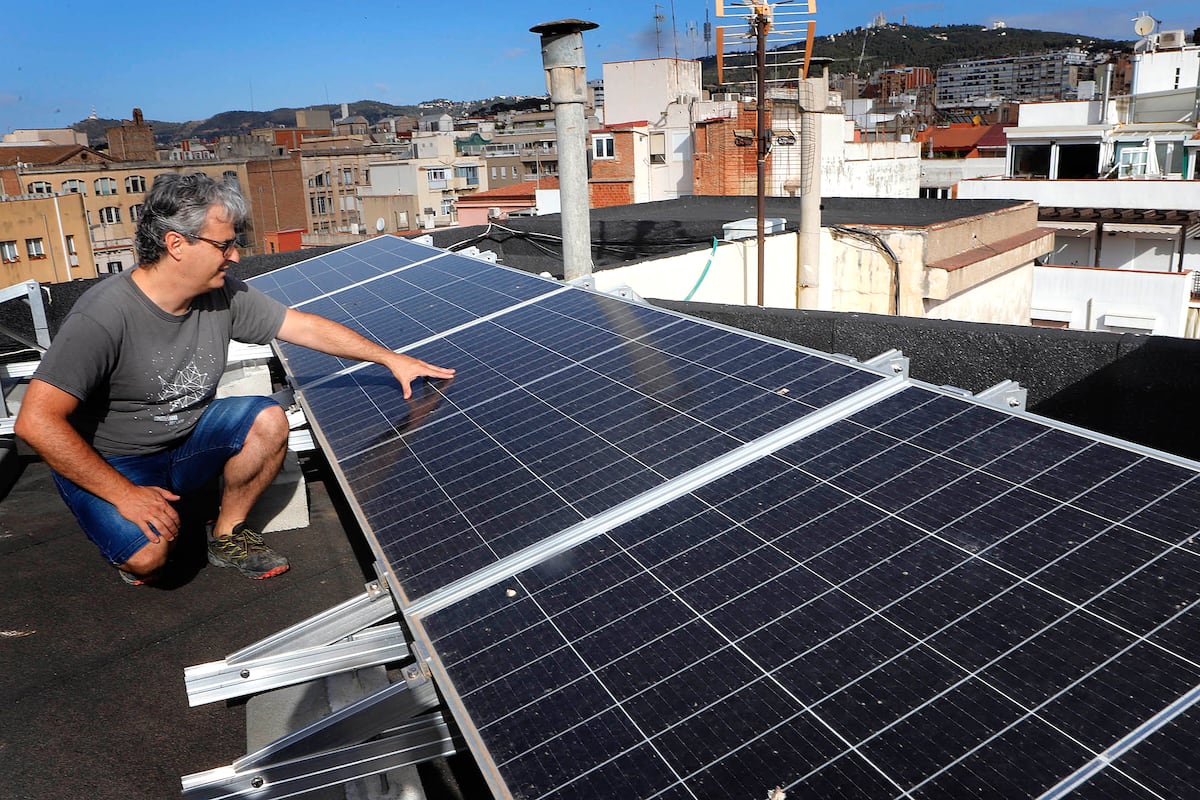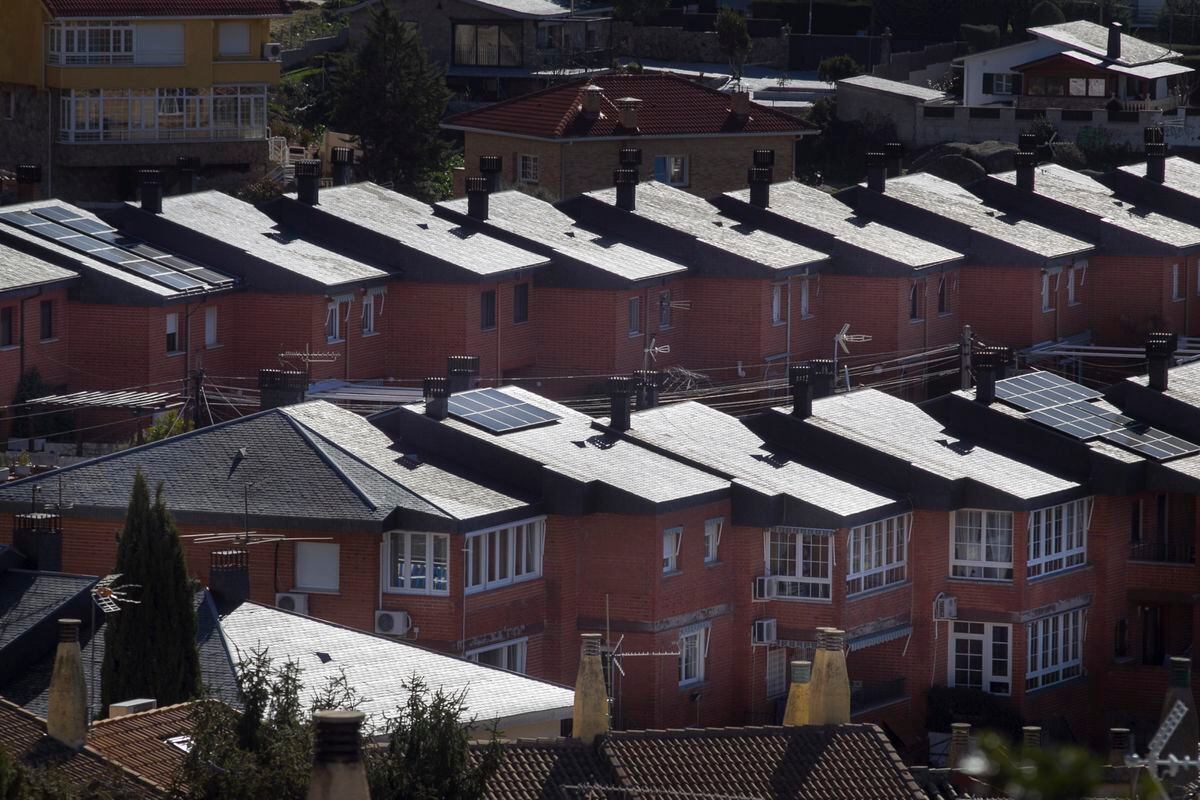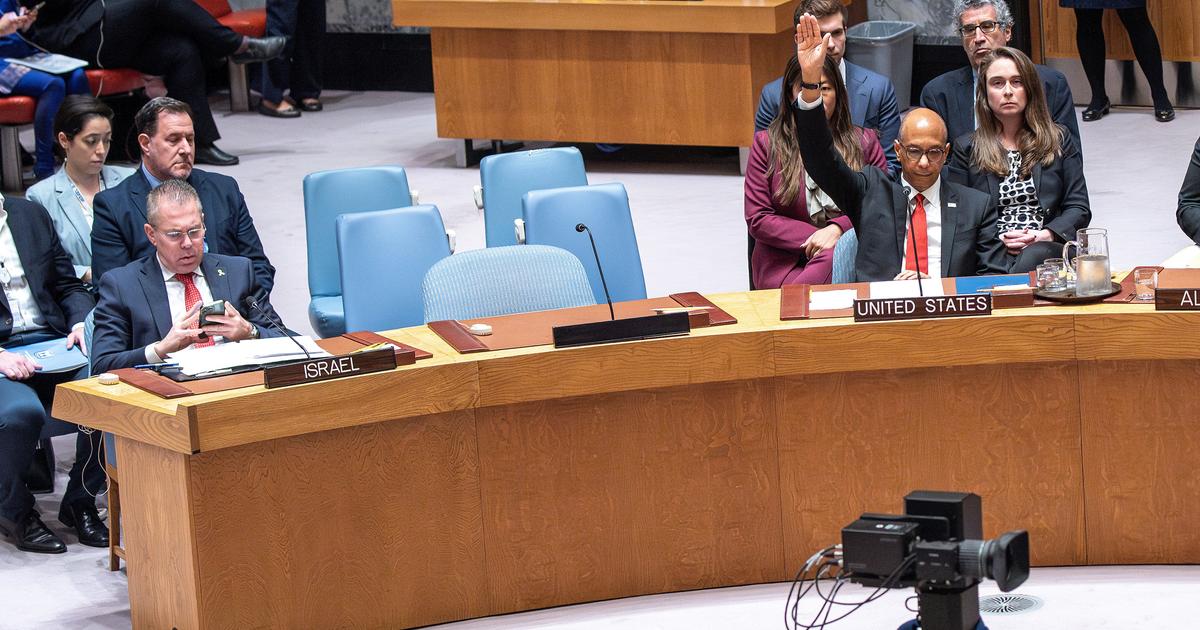Some for the tax credits offered by the City Council and the aid that will come with the Next Generation funds.
Others for environmental awareness and because since 2019 self-generated solar energy can be shared.
Others because the price of electricity is through the roof... Or all at once.
The point is that the interest of the residents of Barcelona to install solar panels, and despite the fact that it is not always possible due to the characteristics of the roofs of the city, has skyrocketed.
They are installations that allow half of the electricity consumed to be generated and can be amortized in between three and six years.
If between 2017 and 2020 in Barcelona 209 photovoltaic projects were installed in buildings (single-family or flats, with a total installed power of almost 1,700 kilowatts), only between mid-May and June 23 the City Council received 347 queries from neighborhood communities , of which 157 have evolved into specific studies.
The Association of Property Administrators confirms the interest and in the Installers Guild they plan to triple the projects: they cannot cope and are providing specific training among their professionals.
A specialized company ensures that requests have multiplied by four.
And all of the above indicate that there are supply problems for some parts.
More information
"We decided to put solar panels in the midst of a pandemic"
In Barcelona, demand has skyrocketed since the City Council launched the Moment Solar campaign in May, hand in hand with installers and property managers.
The director of Energy and Environmental Quality services, Cristina Castells, explains that the first to be interested in photovoltaics, years ago, were the residents of single-family homes.
Now self-consumption projects for entire blocks are on the rise, due to legislative changes: a simple majority is enough to install the panels, they can share the self-generated energy, and it is not necessary for all the flats to join.
"Now investment is no longer a problem," he says from a council that lowers the building license by 95% and offers a 50% IBI bonus for three years.
"In a large building you can pay for yourself in two or three years," he says.
The City Council has trained six people, the promoters, who accompany the farms in the process.
“We are a little overwhelmed, but happy to get projects off the ground,” he says.
At the urban level, the regulations of the General Metropolitan Plan or the Urban Landscape Ordinance prevent some projects (when pergolas have to be built on the roofs to take advantage of the space and raise the plates), so the town hall is drafting an instruction to make it clear that these are not illegal works to raise volumes that are not permitted.
The manager of the Association of Property Administrators, Lorenzo Viñas, confirms that "the communities are betting very strongly on the installation of photovoltaic panels" and assures that the installers and suppliers are "very saturated".
Viñas applauds the public aid and the "agility in licenses", and instead laments two setbacks.
One is the lack in the market of inverter devices (which convert direct current into alternating current) due to the microchip crisis.
And the other is the delay of operators such as Endesa in installing photovoltaic containers.
triple the number of projects
On behalf of the Installers Guild, its director, Daniel Carrasco, assures that "demand is very high, people are very interested" and that the guild school is offering specialized courses.
"Demand has increased between 50% and 80% and we hope to triple the projects," he says.
"Until now, large installations had been made, and there was not so much interest in residential self-consumption, but now it is brutal," he says.
The energy services company Adymus has been in the sector for some time and, seeing its take-off, has opted for projects in multi-family buildings.
Its manager of the residence area, Joan Miralles, also applauds that "the administrations have gotten their act together".
He assures that they have several meetings with neighbors each week: “This week, four;
and all four have approved the installation.”
The demand has multiplied by four, he quantifies, and the acceptance ratio is 70%.
He also warns about the lack of installers, inverter devices and Endesa's slowness when installing photovoltaic meters.
It may take seven or eight months, he says.
Asked the company, a spokesman admits that there are delays, which they attribute in part to the necessary paperwork.
In the upper area of Barcelona, Manel Jiménez encouraged his entire community to install plaques in 2019.
20 neighbors: from elderly people to young people with children.
"Everyone agreed and we were one of the first shared self-consumption communities," he boasts.
They disbursed about 3,000 euros per flat, but they calculate that they will have it amortized in two years.
Jiménez is satisfied with the project, but is critical of the low price that companies pay for the surplus: electricity that is produced during daylight hours and not consumed immediately.
“It is a pity that part of the result of a private and public investment in aid is bought by a company at a fifth of the low cost price and sold three times more expensive.
There should be a count of these surpluses and a bag for future consumption”, he insists.
This neighbor says that it is difficult to calculate the savings in euros, because prices have skyrocketed, but he assures that 50% of the farm's consumption are kilowatts produced by the panels.
And he explains that he encourages his neighbors to change their habits: "Don't put the washing machine on if it's cloudy."
They have put 80 plaques on his farm: “For those who have space, it is silly not to take the step, it is good for saving, for the environment, it generates employment…”.
Unlike this farm of 20 neighbors, those of Eduard Moreno, from Gràcia, did not dare, but they did allow him to install plates for his own consumption.
He did it a year ago, when he arrived at the building, which has 10 apartments, and renovated his apartment.
"One of the neighbors has already told me that now she would cheer up," he says.
There are four at home: "We calculated that we would amortize the investment in eight years, but with the current price of electricity we will pay for it in six years and it will last us twenty."
In full sun and with five plates it generates between 40% and 50% of its consumption.
In winter, with less irradiation, generation drops to 30% of what it consumes.
You can follow EL PAÍS Catalunya on
and
, or sign up here to receive
our weekly newsletter
50% off
Exclusive content for subscribers
read without limits
subscribe
I'm already a subscriber















